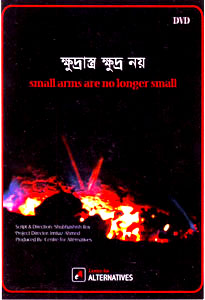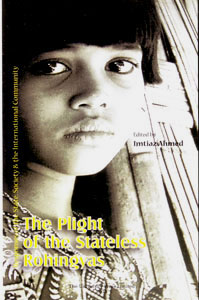Centre for Alternatives has produced several documentaries. For details, see below.

Downlaod a short clip of this documentary here.
Small Arms Are No Longer Small
Proliferation of small arms, light weapons and explosives is no longer a small matter. It was estimated in 2002 that there were more than 600 millions of small arms and light weapons all over the world, enough for one in every ten people on earth. Approximately 59 percent of these weapons
are in the hands of civilians. Te government armed forces, police, insurgents and other non-state actors own the remainder. It is estimated that the illicit arms transfer represent at least 50 percent of the total licit international trade. These illicit small arms and light weapons have produced mtiltifarious problems all over the world. They have aggravated conflicts; undermined the rule of law, produced displacement of people and given birth to a culture of violence.
Banglade also has its due share of illegal small arms, light weapons and explosives. In 2001�2002 it was estimated that there were more than 200,000 illegal fire arms in the country. In 2006 it was revealed that in one year (April 2004-March 2005) a total of 120,927 fire arms were recovered. In Bangladesh and also elsewhere in the world, there is a symbiotic relationship between politics and illicit lire arms. Small arms, light weapons and explosives have become a means of leveling the differences and settling political scores. Polarized political culture and misgovernance are primarily responsible for the increased weaponisation of the society and the endemic societal violence.
But then amidst serious discourses on small arms, light weapons and explosives we tend to forget the sufferings of the victims. The victims may be individuals, families of thc victims, witnesses of the incident and neighbours of the original victims. They might require immediate or long term medical help, psychological support, material assistance, legal support and advocacy. This documentary is about the devastating impact of small arms, light weapon and explosives with particular reference to the plight of the victims in Bangladesh.
Script & Direction: Shubhashish Roy
Project Director: Imtiaz Ahmed
Produced By: Centre for Alternatives
Price (Inclusive postgae) :
USD 20.00
BDT 300.00
Order / Contact Us : info@calternatives.org

Downlaod a short clip of this documentary here.
The Plight of the Stateless Rohingyas
The Rohingya refugee problem was created in the course of several historical trajectories. It has been demonstrated that the Rohingyas are both stateless and refugees. First, they became stateless in their homeland and then eventually they had to embrace the status of refugeehood under conditions of persecution, discrimination and torture. The Rohingya refugees in Bangladesh have remained stateless amid their refugeehood. The causes to their refugeehood can be categorized as primary factors (as enumerated in the 1951 Convention), secondary factors (as identified in the 1969 OAU Convention) and auxiliary factors (such as economic, ecological and demographic change). The denial of citizenship rights, denial of freedom of movement, eviction campaigns, forced labour, expulsion from their lands and property, violence and physical torture contributed to the making of the Rohingyas stateless and refugees.
Script : Md. Atiqur Rahman
Direction : Documentary Team in collaboration with Shubhashish Roy
Project Director: Imtiaz Ahmed
Produced By: Centre for Alternatives
Price (Inclusive postgae) :
USD 20.00
BDT 300.00
Order / Contact Us : info@calternatives.org
